Type Pancakes | ||
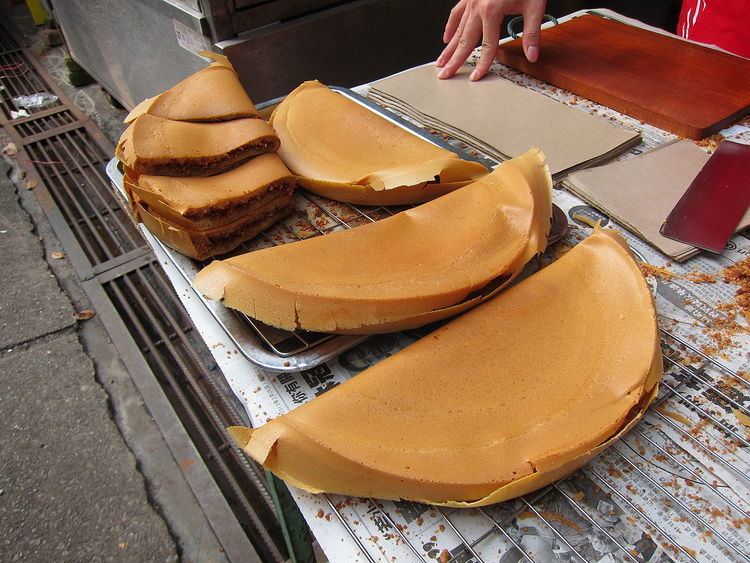 | ||
Alternative names Ban Jian Kuih, Chin Loong Pau, Min Chiang Kueh, Martabak Manis, Terang Bulan, Kue Bandung, Apam Pulau Pinang, Kuih Haji (in certain areas) Place of origin Brunei, Indonesia, Singapore and Malaysia Main ingredients Flour, hot water, baking powder, bicarbonate soda, sugar, eggs, peanut, margarine, butter Places of origin Brunei, Indonesia, Singapore, Malaysia Similar Murtabak, Appam, Kue, Bakso, Kue cubit | ||
Apam balik pancakes filled with peanuts sugar
Apam balik (English: 'turnover pancake') or terang bulan (English: 'full moon') is a type of griddle pancake common in Southeast Asia. It is usually sold at specialist roadside stalls throughout Brunei, Indonesia, Singapore and Malaysia.
Contents
- Apam balik pancakes filled with peanuts sugar
- How to bake apam balik pancake at balik pulau penang
- Other names
- Description
- References
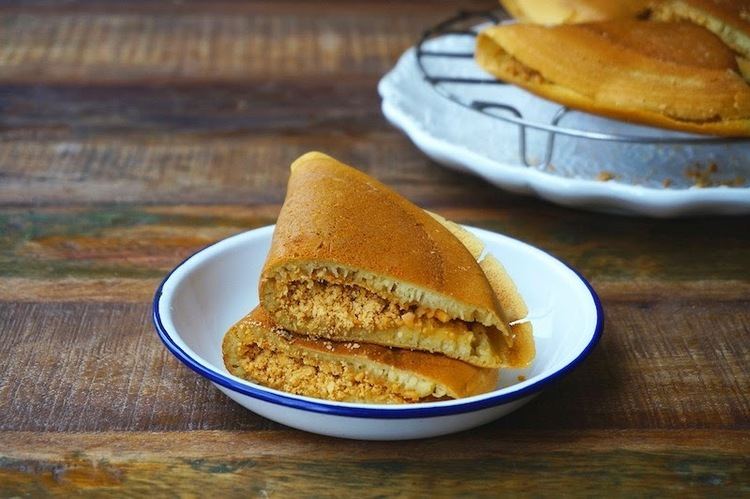
How to bake apam balik pancake at balik pulau penang
Other names
The dessert is also known by various names depending on the region. Some of them are:
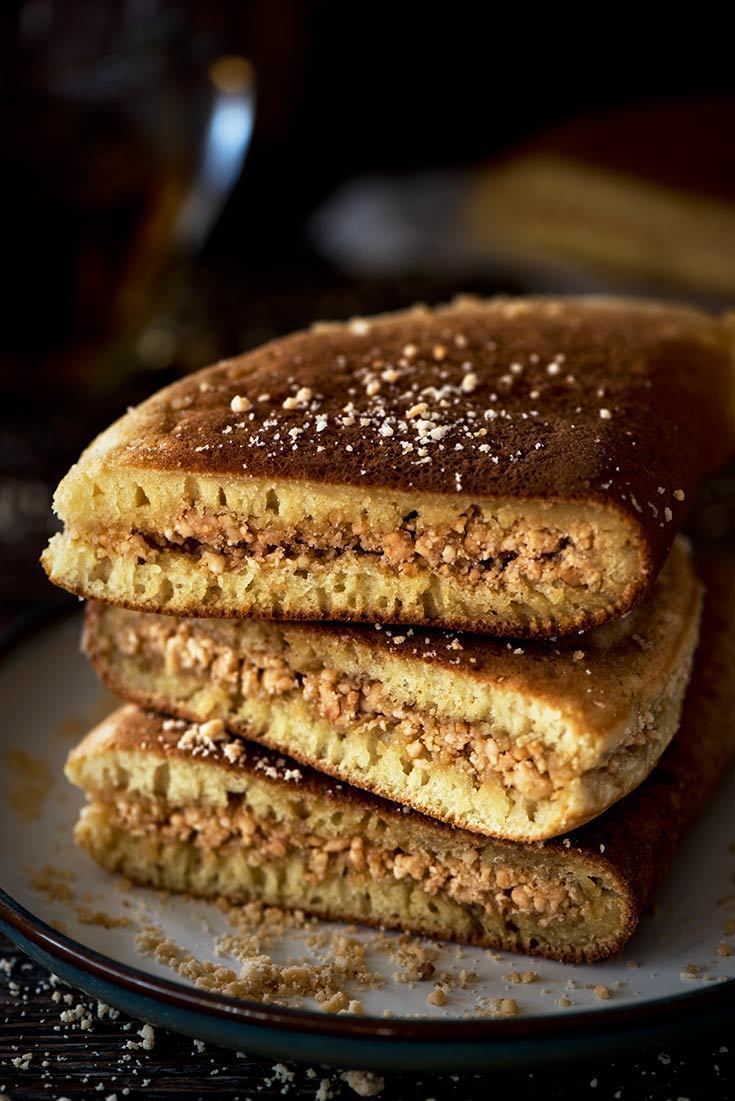
Description
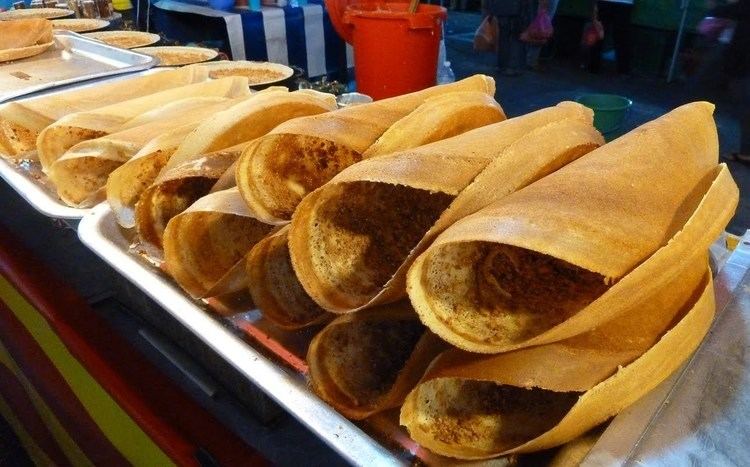
The pancake's batter is made from a mixture of flour, eggs, sugar, baking soda, coconut milk and water. The batter is cooked upon a thick round iron frying pan in plenty of palm margarine to avoid it sticking to the pan. Then other ingredients are sprinkled as filling; the most common or traditional is crushed peanut granules with sugar and sweetcorn kernels (available from cans), but modern innovations such as chocolate sprinkles and cheddar cheese are also available. Then, the pancake is folded (hence the name: "turnover pancake") and cut into several pieces.
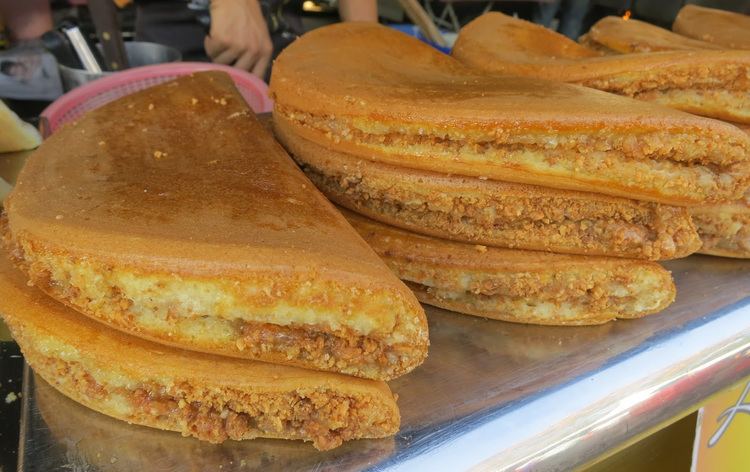
In Indonesia there is a smaller version made with smaller pan, they are caled martabak mini or terang bulan mini.
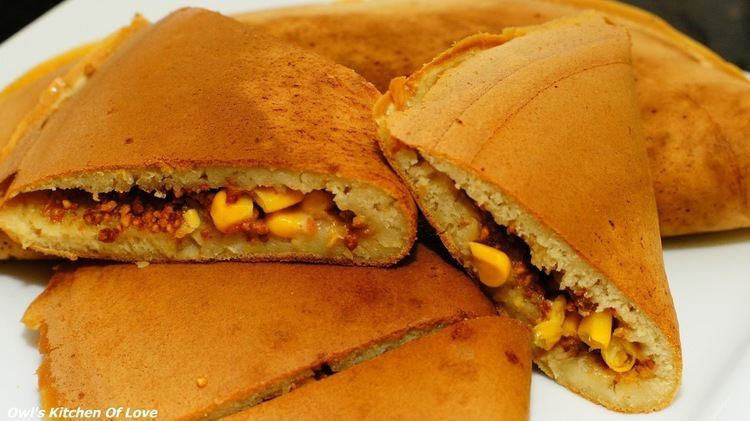
The texture of the apam balik can vary depending on the amount of batter and type of pan used, from one that is akin to a crispier form of crumpets to small thin light pancake shells that break when bitten (the latter is usually called apam balik nipis, 'thin apam balik').
The dish has been declared a heritage food by the Malaysian Department of National Heritage.
There is a Peranakan variant, the apom balik, that closely resembles the Indonesian Serabi.
